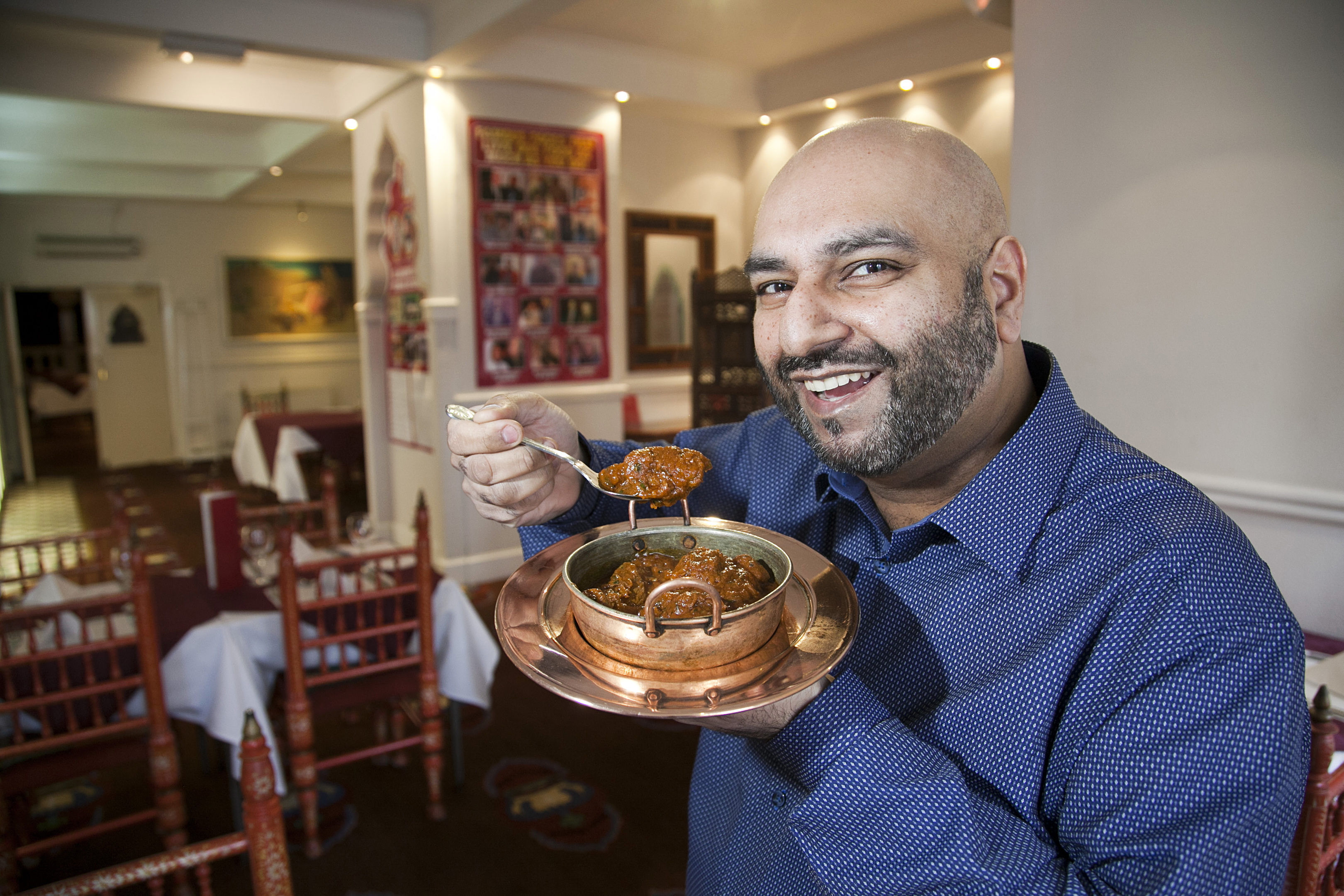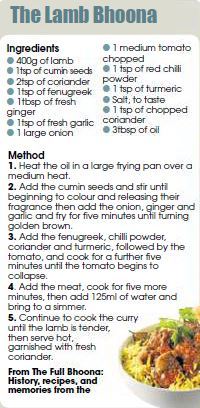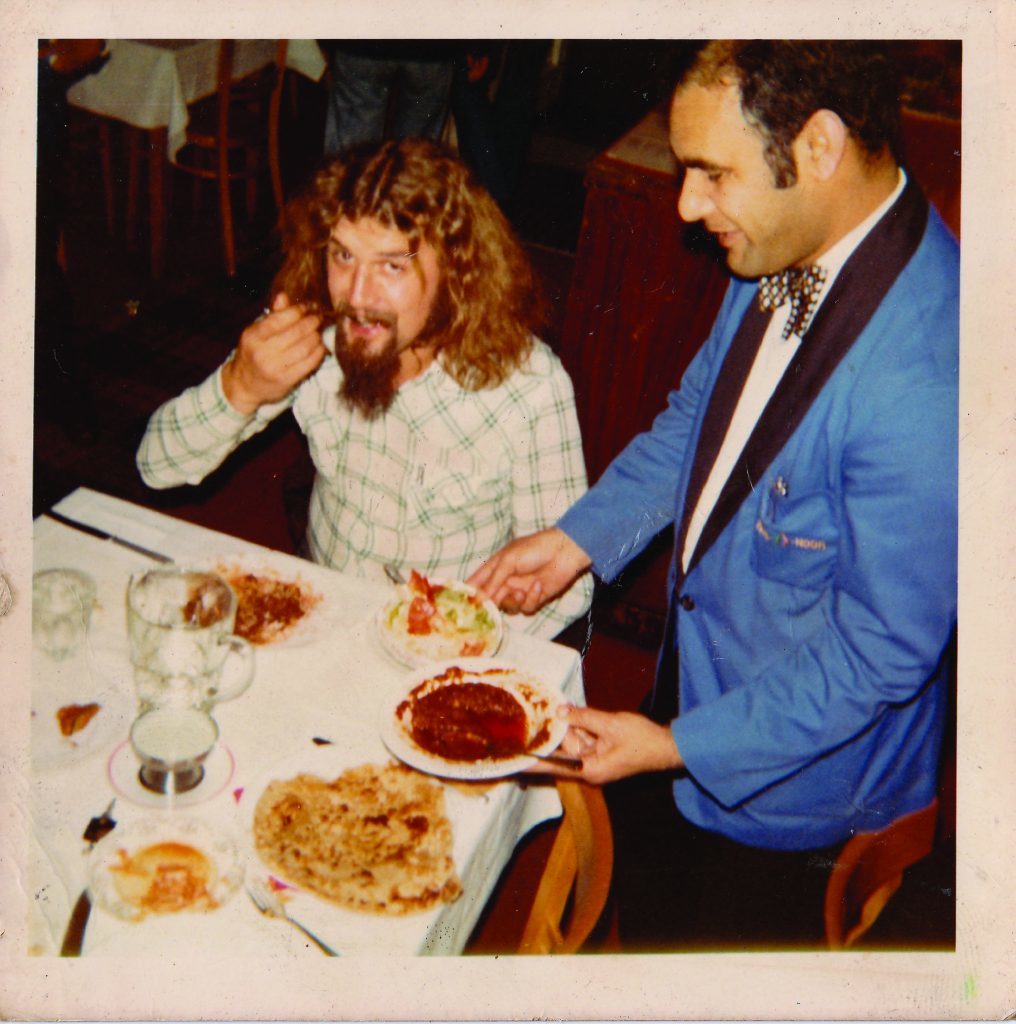
IT’S a dish that’s permeated more than just our taste buds. The Full Bhoona has become part of our language.
As one of the first dishes many Scots tried in the new Indian restaurants that sprung up in Glasgow in the 1960s, it also became a city’s shorthand for “throwing everything into it.”
Gibson Street, in the city’s West End, was a hotspot for curry lovers and home of two of Glasgow’s oldest-surviving restaurants, the Koh-I-Noor and The Shish Mahal.
Now, more than 50 years later, the Tahir family behind the Koh-I-Noor are lifting the lid on what goes into their curries with the launch of their cookbook – The Full Bhoona.
It includes dishes the family have served since the opening day in 1964.
“In the early days, we would have 1000 customers a day. Often you’d see people come in twice a day for lunch and dinner because it was so cheap,” said owner Waseem Tahir.
“There were long queues out the door. People would even bring pots and pans to take our curries away with them too.”
Waseem’s grandfather Qadir and father Rasul opened the original Koh-I-Noor in February 1964, with just six tables and a handful of curries on the menu. They were just a few streets away from The Taj Mahal, which opened in 1954 and is thought to be the city’s oldest Indian.
Around six months after the Koh-I-Noor, the Tahirs’ cousins opened another now-legendary restaurant, The Shish Mahal, across the road on Gibson Street, which was later home to the Maharajah, the Himalaya and the Shalimar.
Despite having moved locations, the Shish Mahal and Koh-I-Noor continue their friendly rivalry and attract generations of loyal customers.
Waseem says the reason the Indian restaurants attracted so much custom in the 60s and 70s was down to the licensing laws.
He explained that back then the pubs shut at 10pm, so going for a “Ruby” was the only way for people to keep drinking.
The Koh-I-Noor is also popular with stars, like Alan Cumming, Derren Brown and Lulu. One of its most loyal and famous patrons is Billy Connolly.
The Big Yin first visited the Koh-I-Noor in 1967 and has regularly returned for a veggie curry over the past five decades.
“I think what makes Indian restaurants unique is the variety,” Waseem said. “Every Indian restaurant has its own take on a dish so you will never find two the same, unless it’s a chain.”
The Koh-I-Noor cookbook includes his grandmother Aisha’s beloved chicken curry, lamb biryani and lamb bhoona, as well as spiced onions, samosas and other customer favourites.
“It’s the exact same recipes with the same simple ingredients my grandparents used in 1964,” he said.
As well as sharing select recipes, The Full Bhoona tells the story of how the Tahir family went from Central Punjab to the Gorbals.
In the early days, Aisha and Qadir were in the kitchen while Rasul managed the restaurant floor.
Then in 1983, the family moved to their current Charing Cross location after Glasgow City Council earmarked their original building for demolition.
Although he grew up on his grandmother and mother’s cooking, the first food Waseem ate in the Koh-I-Noor wasn’t curry but another British classic. “When I was five, I used to go every Saturday with my grandmother, not for a curry but for fish and chips with tomato sauce,” he revealed.
“I started working in the Koh-I-Noor when I was 14. My first job was chopping onions. Now that was a hard job! My eyes would water so I’d sneak down and grab the safety goggles from the keg room,” said Waseem.
“My dad would shout at me to take them off! Then I washed dishes for six months and moved on to making chapattis before making it out front.”
Waseem took the reins in 2010, and today a fourth generation is learning the family trade.
It’s the friendly, family atmosphere, as much as the quality of the food, that’s made the Koh-I-Noor a success, says Waseem.
And after reminiscing about the Koh-I-Noor’s humble beginnings, Waseem likes the idea of going back to basics with a small restaurant focused on the more traditional way of cooking.
“I’d love to go back to that way of cooking,” he said.
Billy Connolly’s been a fan for 50 years
Billy Connolly has been a Koh-I-Noor regular ever since his first visit in 1967.
And he continues to pop in for his favourite meal – vegetable samosas and saag aloo, a spinach and potato curry.
”Waseem said: “I’ve known Billy since I was young, he’s so nice and always asks for my dad when he comes in.
“He never comes across as a big celebrity.
“He’s very down to earth and will take the time to speak to fans and sign autographs.”

Enjoy the convenience of having The Sunday Post delivered as a digital ePaper straight to your smartphone, tablet or computer.
Subscribe for only £5.49 a month and enjoy all the benefits of the printed paper as a digital replica.
Subscribe
